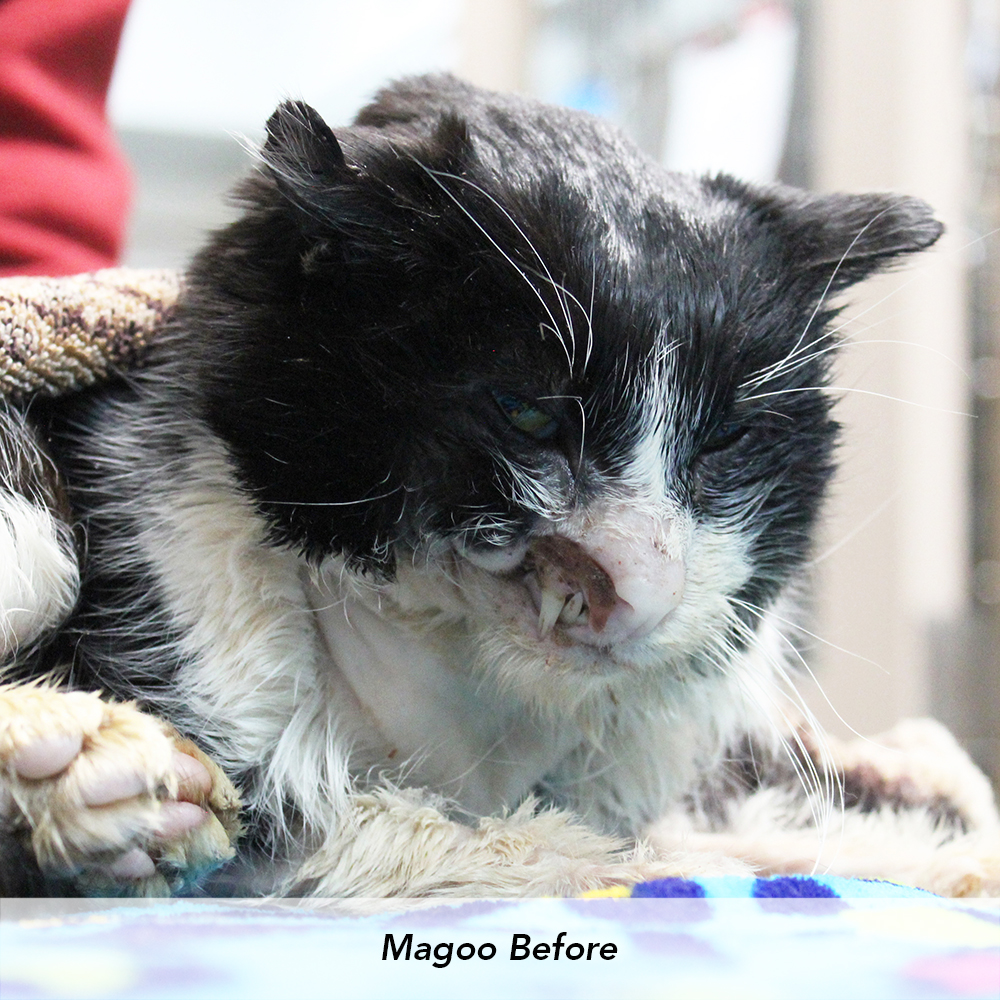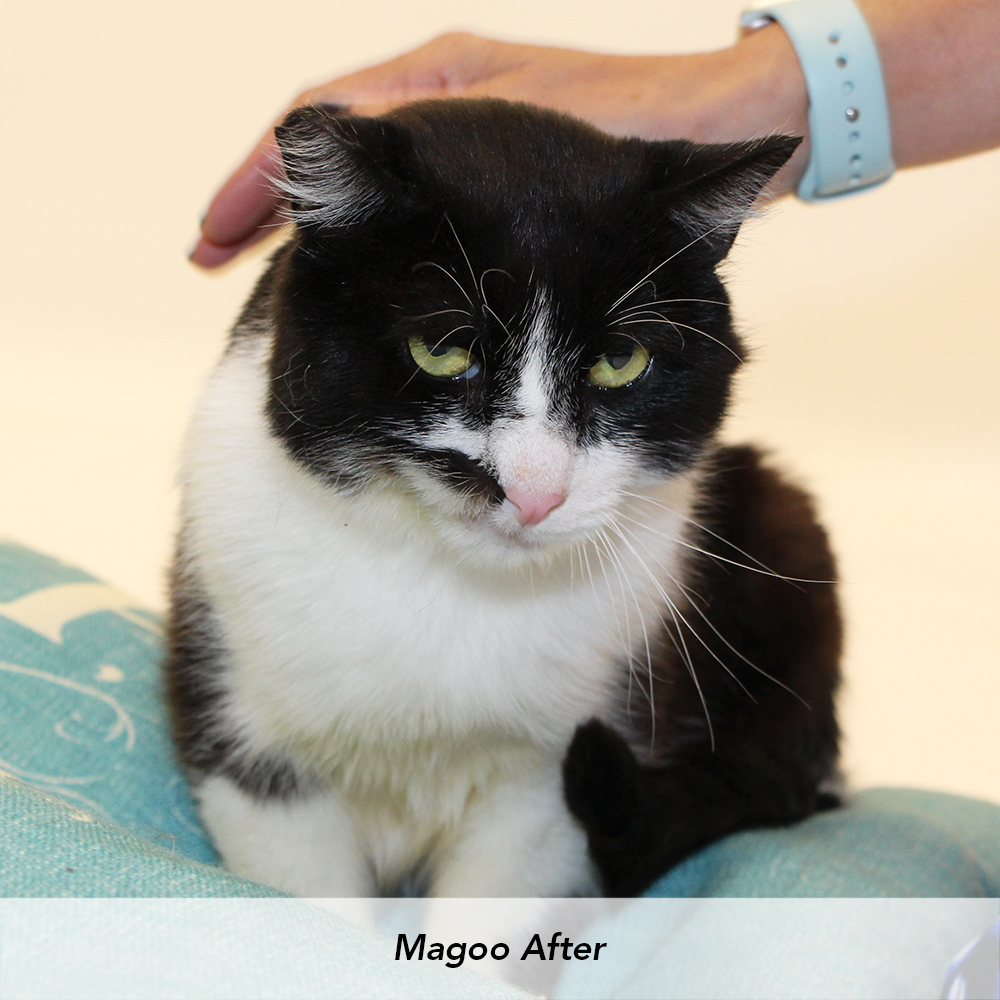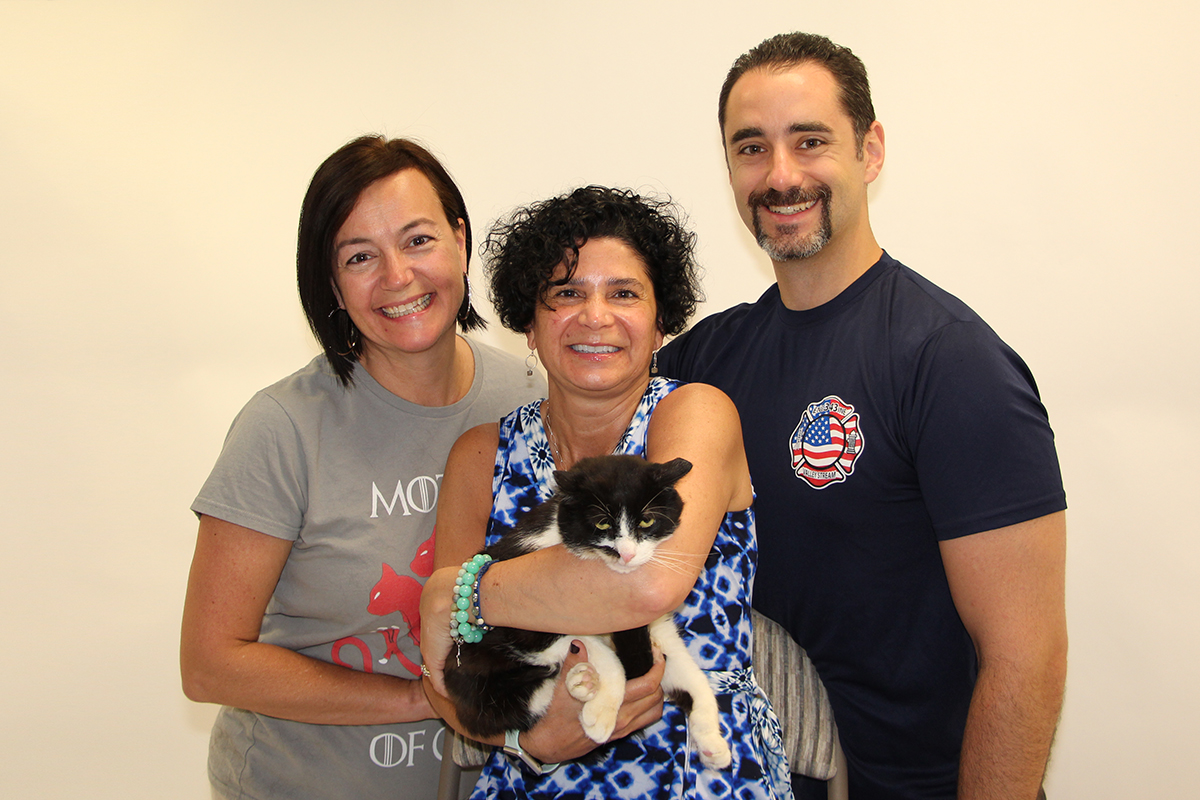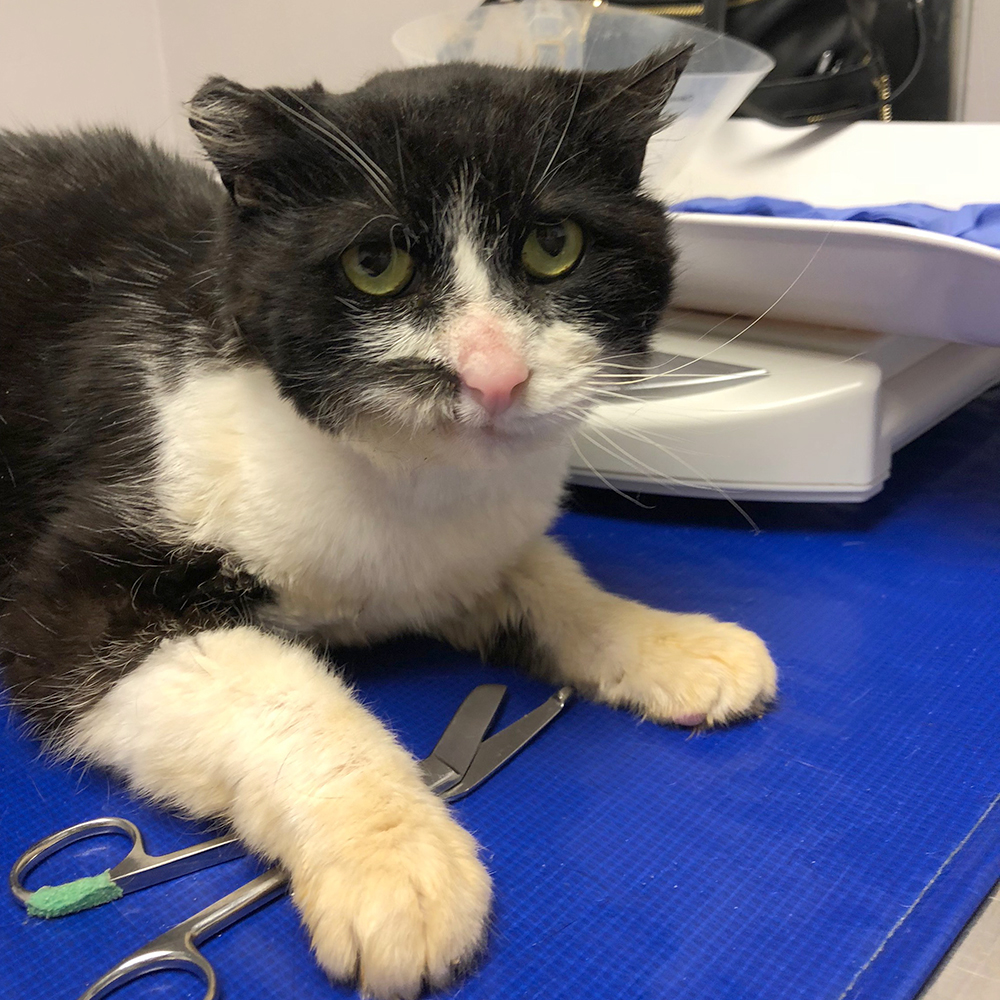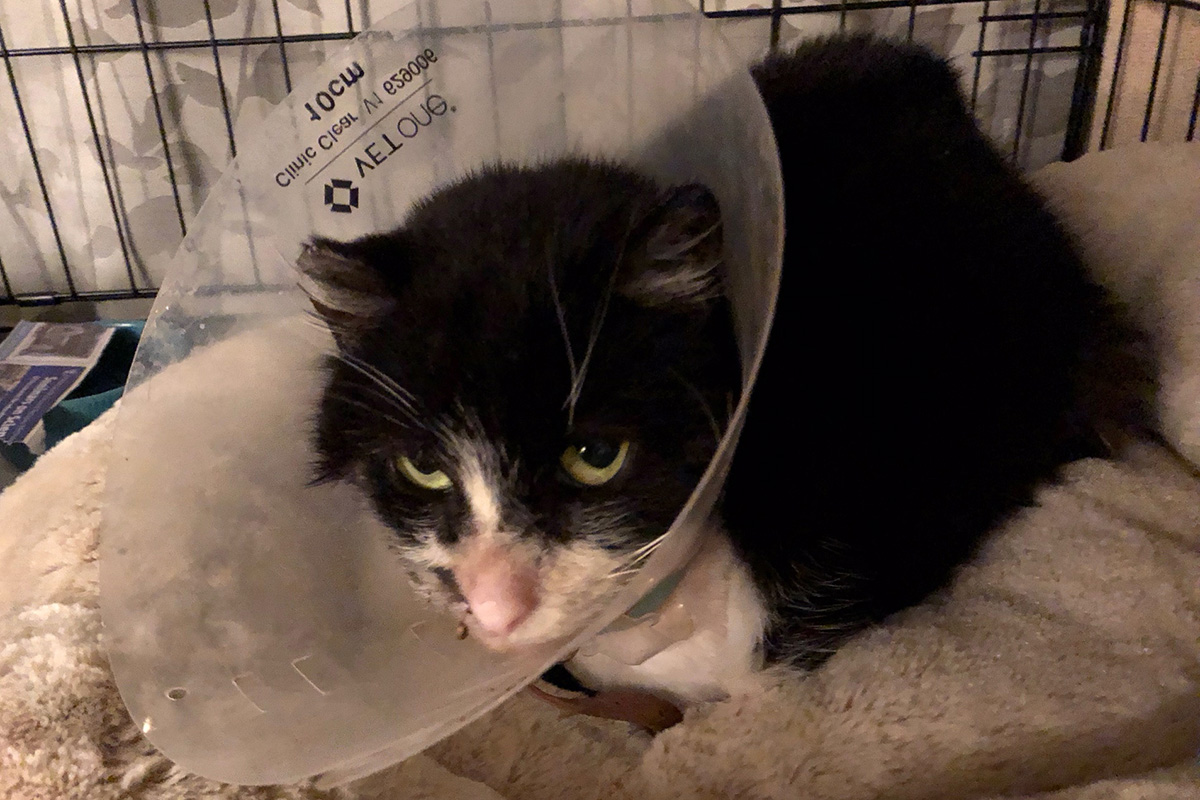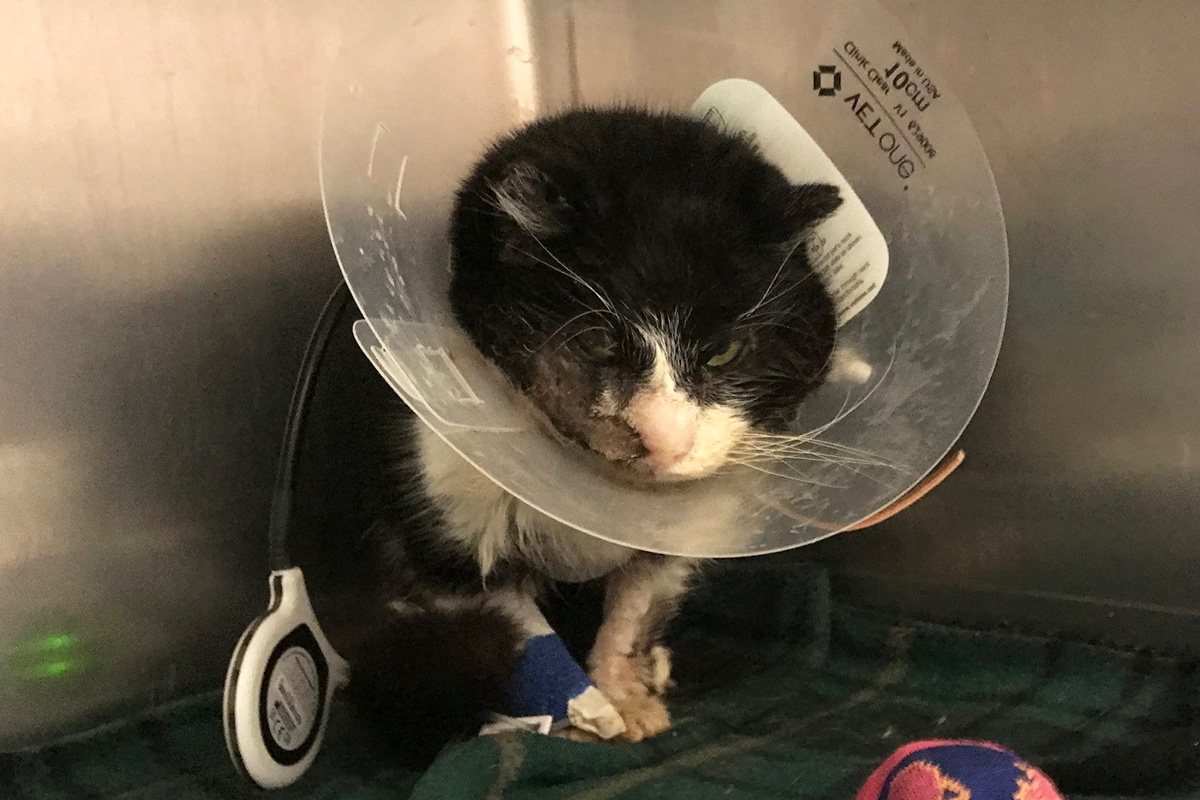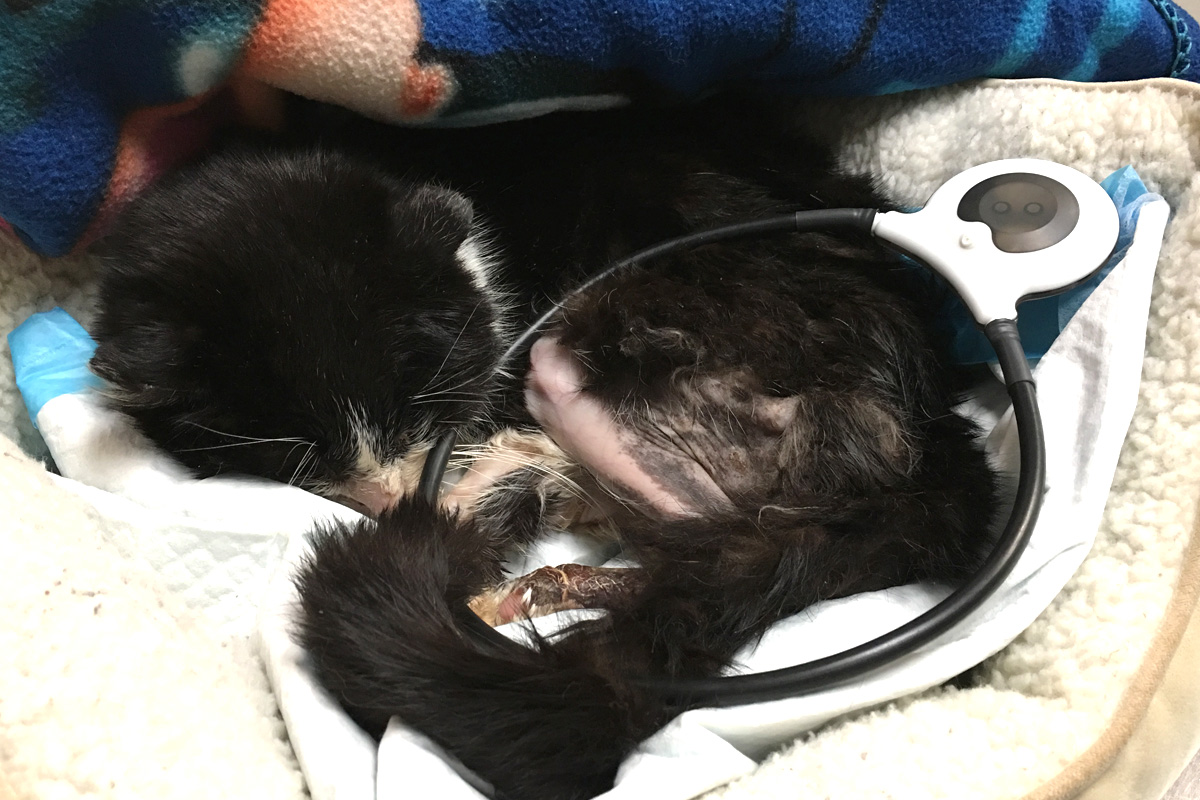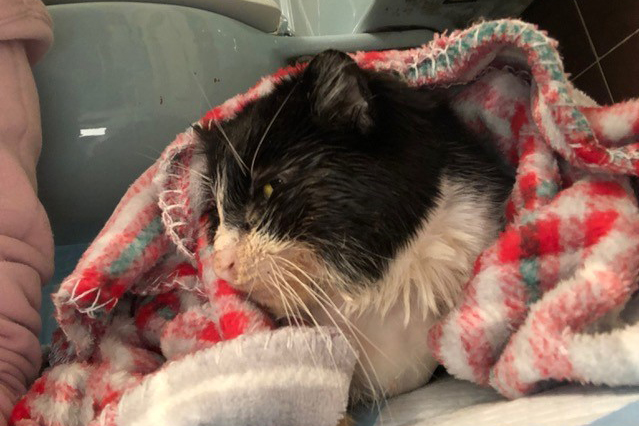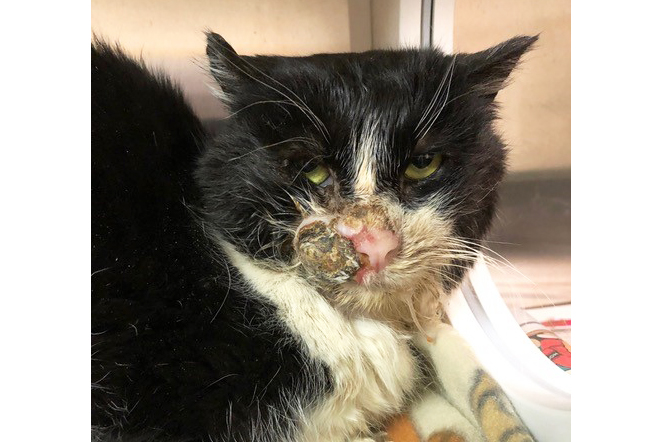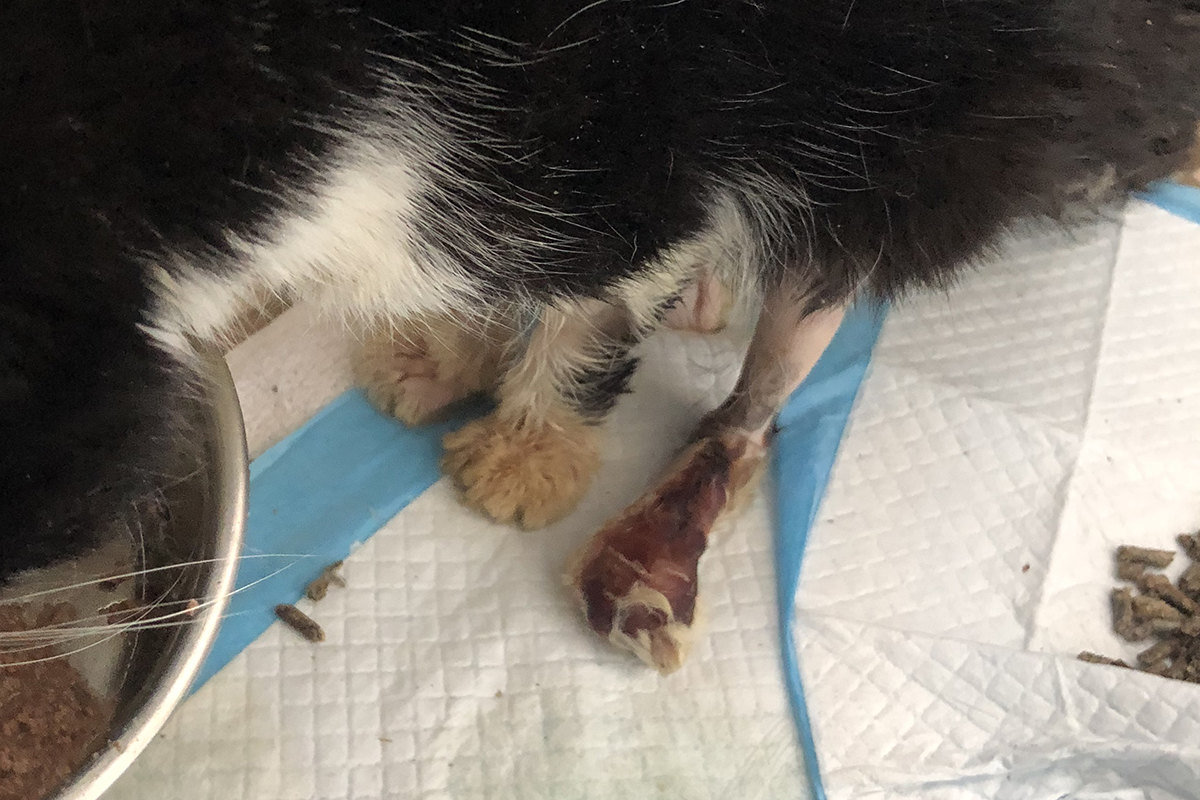Animal League America Rushes to Rescue a Cat in Dire Need
Warning: Some images may be graphic.
Magoo didn’t have much time left when he was found lying frozen and lifeless in a snowy ditch in Upstate New York. The young cat was unresponsive and suffering the symptoms of severe frostbite to much of his tiny body when he was rescued by a Good Samaritan and rushed to Countryside Veterinary Hospital in Glens Falls for emergency medical treatment.
Shortly after arriving at the hospital, Deb Oligny, Director of Animal League America’s Adirondack Region Cat Rescue and Adoption Center, received a call from Dr. Keller, the veterinarian caring for Magoo, asking if we could come to the aid of this ailing cat. She was informed that Magoo had sustained severe frostbite to his face and limbs, as well as serious nerve damage to his hind legs. He was also battling severe dehydration, which in turn caused his kidneys to fail.
“He was on death’s doorstep when he arrived at the hospital. Practically frozen to death with his little body giving out on him. We really didn’t think he would pull through, but with IV fluids and critical veterinary care, he began to eat on his own and his kidney values began to improve,” Deb said. “We knew that in order to transport him to Animal League America’s Port Washington campus he would have to be strong enough to make the trip without complications.”
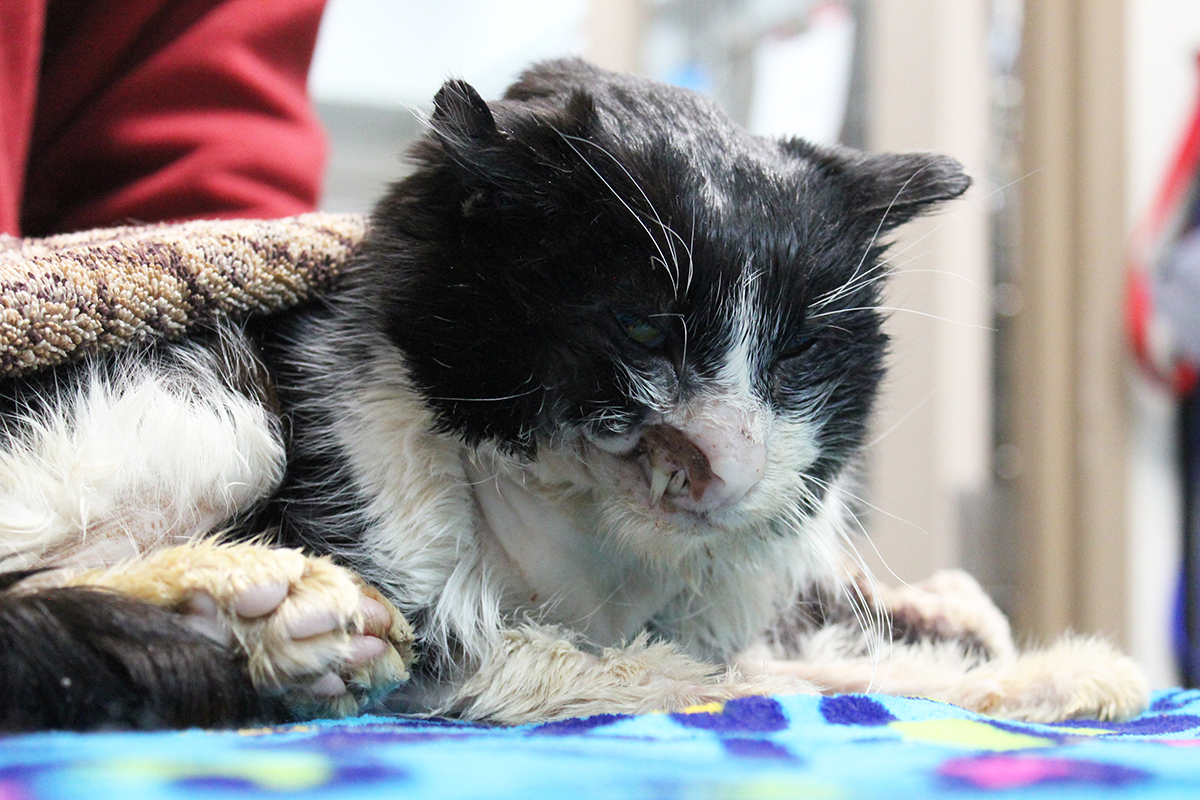
Once in the care of the world’s largest no-kill rescue and adoption organization, Magoo was enrolled into our Help Me Heal Program and brought to the Intensive Care Unit inside our Alex Lewyt Veterinary Medical Center to be seen by Senior Vice President and Chief of Veterinary Services, Dr. Mark Verdino. He and his team of medical professionals thoroughly examined the fragile cat, estimated to be middle aged, and quickly devised a plan of action to treat his injuries.
“You can see there are several areas on his face and body where the skin has already sloughed off, with the most significant area being the right side of his face and nose. In this area we do feel confident that we’ll be able to do reconstructive surgery to improve his functions with eating and avoid any secondary complications. We’ll also try our best to cosmetically improve the area, but this little guy has been through a lot,” Dr. Verdino said. “The other areas, where the lesions are still declaring themselves, we’ll have to wait them out and develop a plan over the next several days. He also has some nervous system impairment in his hind end, so we are going to try various forms of therapy. The hope is to stimulate his back legs and get those nerves to heal somewhat.”
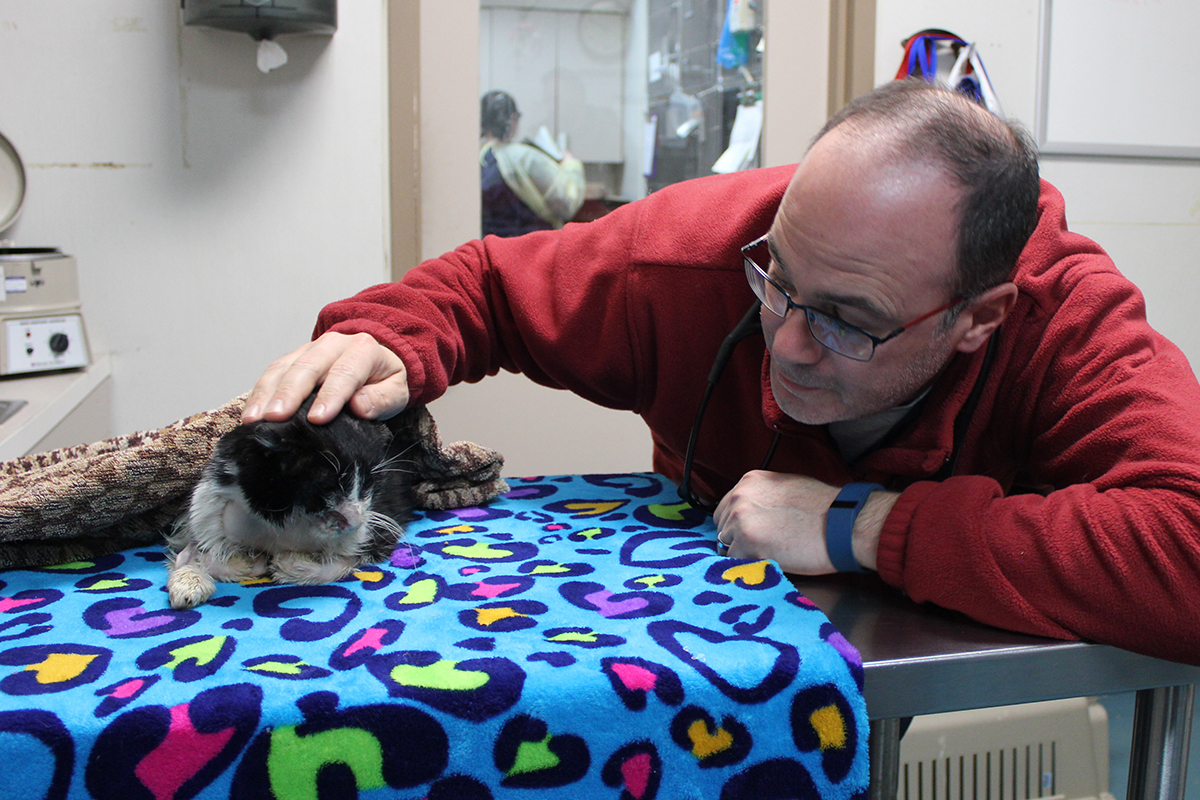
Although Dr. Verdino said Magoo does have some motor function in his hind limbs it will be a waiting game to see how his body reacts to the treatments and he begins to heal with the help of the round-the-clock nurturing care he’ll receive in our Pet Health Centers. With your support of our one-of-a-kind Help Me Heal Program, Magoo will receive the high-quality medical care he so desperately needs to transform into a healthy and highly adoptable pet! Please donate today so other animals in need of healing can also be afforded that same opportunity.
Tips to Provide Neighborhood Strays Shelter from the Cold
Magoo is a prime example of the cruelties homeless animals endure when they’re left without guaranteed shelter from the harsh elements. With nearly 70 million stray dogs and cats in the United States with nowhere to take cover during times of severe weather, Animal League America wants to remind our fellow animal lovers to look out for homeless animals in your neighborhood. Even if bringing a stray into your home isn’t an option, there are things you can do to provide them with a chance to survive and see a better tomorrow. Here are a few important tips from Dr. Verdino that could mean the difference between death and survival for our four legged friends.
Any Type of Shelter Can Make a World of Difference – Although most feral cat colonies tend to have a place to go in inclement weather, the problems occur when a storm rolls in rather quickly and they simply cannot reach that safe haven, or those areas are no longer available. If you know there are cats hanging around your house or your neighborhood then you could put out some sort of shelter for them to retreat to when the weather becomes too much for them to bear. Igloo houses, pet carriers, or even a heated space where they can retreat during the winter months, are all suitable options.
Create a Welcoming Area – I remember as a child my parents would always crack the garage door a few inches and leave some food and water to allow for the cats to come in and out as they please. It gives them that safe haven where they can avoid harsh conditions and get some nourishment. You don’t have to do much, but even the slightest gesture can make a huge difference for animals in desperate need.
If Possible, Take Them In – If you are willing to open your home to an animal in need during inclement weather, I certainly encourage people to do that. You do have to take precautions because many of these cats are not vaccinated and you don’t know if they like being handled. The best thing to do would be to take a hands-off approach if possible. Also, if you already have pets in the home, it’s best to keep your pet separated from the animal you are temporarily taking in. Without having a background on the animal and knowing its temperament, it’s difficult to tell how they will react in certain environments.



